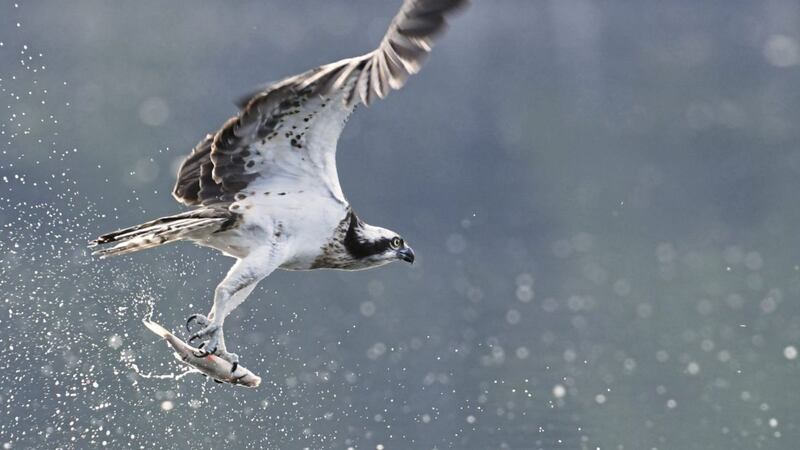MODERN devices enable us to connect with each other in ways we never thought possible 10 or 20 years ago.
During our current period of isolation and absence from friends and family, mobile messaging apps like FaceTime, Zoom, or WhatsApp have all been vital communication tools. Our appliances also facilitate access to live events streamed in real time linking people to their home towns and communities from around the world.
We are privileged too, through webcams, to observe many intimate and secretive aspects of the natural world. I’ve recently been tuning in to a live Osprey camera from Llyn Clywedog in Hafren Forest, on the edge of the Cambrian Mountains, Wales. The live feed, one of many from different locations across Ireland and Britain, showing nesting birds, is available online daily, relaying every stage of the breeding cycle of this striking bird of prey.
The return of the Osprey Pandion haliaetus, or ‘fish hawk’ as a breeding species to the highlands of Scotland in the spring of 1959 was one of the most significant local conservation stories of the 20th century.
Persecuted for centuries, this magnificent raptor hadn’t bred there for all of 50 years. Its return sparked intense media attention and the use of hundreds of volunteers to provide a 24-hour security watch during the breeding period to protect the birds and their precious eggs.
That year, three young ospreys were successfully raised at the now famous Loch Garten, a remote spot, a few miles north of the Cairngorms. The birds have since become firmly reestablished throughout Scotland and Britain.
Watching the on-screen female patiently insulate her three eggs in the large nest of branches, twigs and bark, I was transported back many years to another Scottish location, the Loch of the Lowes, Perthshire, where I spent hours watching a breeding pair, rewarded with spectacular views of the adult male hunting for fish while the female sat on her nest high up on a Scots pine, on the western shore of the loch.
Ospreys arrive to breed throughout northern Europe in spring from their wintering grounds in western and southern Africa. The bird has a distinctive brown and white plumage, a chocolate brown back, white under parts, streaked with tinges of brown especially under its wing. The head is mostly white with a slight crest and a brown patch, extending around the nape to both eyes.
One of its Irish names, ‘Iascaire coirneach’ – the ‘tonsured fisherman’ references its monk-like bald head. They nest high up, usually in pine trees near lochs where they hunt for fish, detected from the air and caught after a spectacular dive, as the bird plummets down head-first, before, with impeccable timing, the feet are thrust forward to seize the prey.
With its long talons, the osprey also has sharp ‘spicules’ or spikes on the underside of the toes, which act like an adhesive to help grip the slippery catch.
The osprey was once native to Ireland but, as with many other raptors here, the bird became extinct by the end of the 18th century. In recent years individual birds have been seen on migration through suitable breeding locations in counties Down, Fermanagh, in the midlands and along the east coast, leading many to predict it is only a matter of time before they breed here again.
With plenty of existing available habitat, there is no reason the bird can’t become established again. Let’s hope the ‘grey wandering osprey’ as Yeats described it, makes a welcome return soon. Keep safe and, if you can, tune in to some of those nesting webcam sites.








